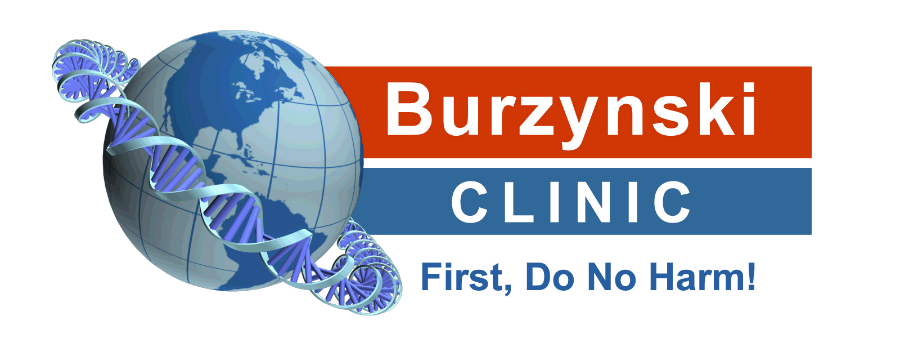Childhood Optic Pathway Glioma: A Brighter Outlook at Burzynski Clinic
Friday, July 04, 2025 | By: Burzynski Clinic
Did you know that optic pathway gliomas represent one of the most challenging aspects of pediatric oncology? These tumors can devastate a child's vision and lead to long-term complications, intensifying the emotional and physical toll on families. However, recent innovative approaches in treatment, particularly at the Burzynski Clinic, are offering hope where there once was despair. In this blog post, we will explore the encouraging results of Protocol BT-23, which utilized Antineoplastons A10 and AS2-1 to target optic pathway gliomas in children.
Understanding Optic Pathway Gliomas
Optic pathway gliomas are brain tumors that affect the optic nerves in children, often leading to significant visual impairments. These tumors are typically low-grade and arise from the glial cells of the optic nerves. Common symptoms can include blurred vision, changes in eye movement, and even endocrine disturbances due to their proximity to critical structures in the brain.
These tumors predominantly manifest in children with neurofibromatosis type 1 (NF1), a genetic disorder that predisposes individuals to the development of tumors. While optic pathway gliomas are generally slow-growing, their location makes treatment particularly challenging.
Historical Challenges in Treatment
For years, the standard treatments for optic pathway gliomas included chemotherapy, radiation therapy, and in some cases, surgical intervention. While these treatments can sometimes slow tumor progression or alleviate symptoms, they often come with significant side effects that can further impact a child’s quality of life.
- Chemotherapy: While effective in some cases, chemotherapy can lead to systemic side effects, including nausea, fatigue, and an increased risk of infection. Prolonged treatment can also affect growth and development.
- Radiation Therapy: This was traditionally reserved for tumors that showed aggressive behavior or significant visual impairment. However, the long-term consequences on a child's developing brain have raised concerns about its use in pediatrics.
- Surgery: Surgical options may be limited due to the tumor’s location and potential risks associated with removing brain tissue.
Given these challenges, there was a pressing need for innovative therapies that could offer hope without the burdensome side effects of traditional approaches.
Introducing Antineoplaston Therapy
In response to the limitations of existing treatments, the Burzynski Clinic has been at the forefront of developing alternative therapeutic strategies. Antineoplaston Therapy, developed by Dr. Stanislaw Burzynski, utilizes unique compounds derived from the body's natural proteins and amino acids. Specifically, the Antineoplastons A10 and AS2-1 have shown promise in targeting tumor cells while minimizing harm to healthy tissue.
Protocol BT-23: A Beacon of Hope
The Burzynski Clinic recently conducted a clinical trial—Protocol BT-23—which focused on the use of Antineoplaston Therapy for children diagnosed with optic pathway gliomas. The trial aimed to assess the safety and efficacy of these innovative treatments, delivering comprehensive support services and personalized care. Here are the key highlights from the study:
1. Personalized Treatment Plans: Each child involved in the trial received a tailored treatment plan that took into account their unique medical history, tumor characteristics, and individual needs.
2. 24-Hour Monitoring: With concierge-level oncologic care, patients benefitted from continuous monitoring, providing reassurance to both the children and their families during the treatment phase.
3. Nutritional Counseling: The inclusion of nutritional counseling helped with maintaining overall health and wellness during treatment. A well-balanced diet plays a crucial role in supporting the immune system when undergoing cancer therapy.
Promising Outcomes
While the full results of Protocol BT-23 are pending publication, preliminary insights from the trial have been encouraging—offering a brighter outlook for children facing optic pathway gliomas.
- Tumor Stabilization: Many patients have shown stabilization of their tumors, which is a significant achievement, especially for low-grade gliomas that can often remain static over time.
- Visual Improvements: Some children reported improvements in their vision, which has provided much-needed relief for both patients and their families.
- Quality of Life Enhancements: Overall, the personalized approach and supportive care associated with the Burzynski Clinic have contributed to better quality of life during treatment.
The Importance of Continued Research
These findings underscore the importance of continued research and exploration of alternative therapies in the field of pediatric oncology. While conventional treatments have their place, Dr. Burzynski believes it is vital to keep an open mind towards innovative approaches that may provide better outcomes.
Parents and guardians of children diagnosed with optic pathway gliomas should consider exploring all available options, including clinical trials like those offered at the Burzynski Clinic. These cutting-edge therapies could pave the way for significant advancements in the treatment landscape for pediatric brain tumors.
Resources and Support
If you are looking for resources or support for dealing with a diagnosis of optic pathway glioma, here are a few organizations that can help:
- Children's Brain Tumor Foundation: Provides support, information, and resources for families affected by childhood brain tumors.
- Society for Neuro-Oncology (SNO): Offers resources for research, education, and patient care regarding neuro-oncological treatments.
- American Brain Tumor Association (ABTA): Provides patient education and access to helpful resources.
Moving Forward: What Can We Do?
As we look towards the future, it is essential to advocate for more research initiatives that focus on improving treatment modalities for pediatric brain tumors, such as optic pathway gliomas. Parents, caregivers, and advocates can play a crucial role in this mission by:
- Raising Awareness: Sharing stories and information about optic pathway gliomas can help educate others and push for funding and research efforts.
- Connecting with Others: Joining support groups can provide comfort and advice from those in similar situations. Together, voices are amplified.
- Considering Clinical Trials: Engaging in conversations with medical professionals about upcoming clinical trials is critical. New treatments may hold the key to better outcomes.
Final Thoughts: Navigating Hope in Treatment
Families facing optic pathway gliomas often feel overwhelmed, but Dr. Burzynski’s work offers renewed hope. With promising results from studies like Protocol BT-23, innovative therapies are paving the way forward. Stay informed, seek support, and know that progress is possible.

